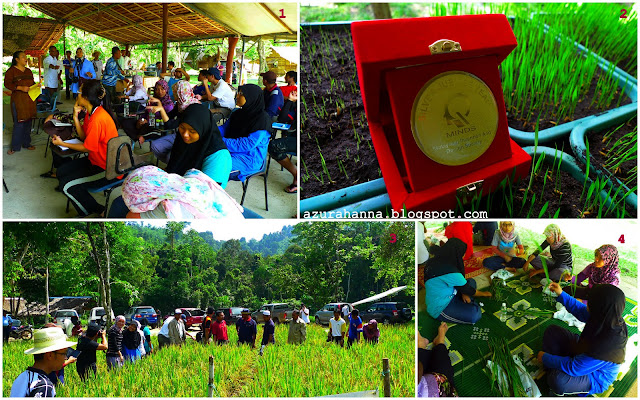Yesterday, I went to one of mini shops at Serdang just to look around and found Lebanese flat bread on the shop's rack called Roti Sihat. I bought it and of course it wasn't as fresh as when you dine in some Arabic restaurant. But I like the chewy texture. From the packet, it is recommended to serve the bread as a pizza base, substitute to pita bread or dip the bread with any gravy including humus or baba ghanoush (I miss Samaneh's baba ghanoush - SEDAP!). The most important is, from the bread tag line - Roti Sihat. The ingredient and the recipe that I have found really proves it is healthy. Less sugar, less fat, less salt! Below is the recipe found on the net. Looking forward to test it!
(Makes: 8 bread)
7g sachet dry yeastMethod
1 teaspoon caster sugar
1 1/3 cups warm water
4 cups plain flour
1 teaspoon table salt
2 tablespoons olive oil
- Place yeast, sugar and 1/3 cup warm water in a jug. Stir to dissolve yeast. Set aside in a warm place for 10 minutes or until foamy.
- Sift flour into a large bowl. Add salt. Stir to combine. Make a well in centre. Add yeast mixture, 1 tablespoon oil and remaining warm water. Mix to form a dough.
- Turn dough out onto a lightly floured surface. Knead, adding remaining oil, for 20 minutes or until smooth. Place dough in an oiled bowl. Cover. Set aside in a warm place for 2 hours or until doubled in size.
- Using your fist, punch dough down. Knead for 2 minutes or until smooth. Divide into 8 balls. Using a rolling pin, roll each ball out to a 22cm round. Layer rounds between baking paper. Set aside in a warm place for 30 minutes or until slightly puffed.
- Heat an oiled barbecue plate on high (230˚C). Reduce heat to low. Cook bread, in batches, for 2 minutes each side or until lightly browned and puffed. Serve.







